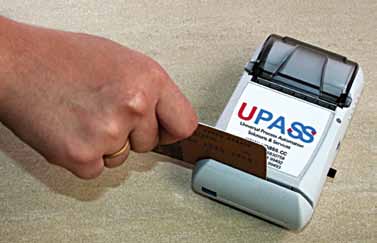 Today, banks have realised that their next huge customer base is not in the urban setting but in the often-neglected rural areas. However, reaching this customer base is not so easy, primarily because the rural areas are not as infrastructure-rich as their urban counterparts. Simple tasks like going to the ATM and withdrawing money make people miss their working hours and, as a result, lose a signifcant part of their income as well.
Today, banks have realised that their next huge customer base is not in the urban setting but in the often-neglected rural areas. However, reaching this customer base is not so easy, primarily because the rural areas are not as infrastructure-rich as their urban counterparts. Simple tasks like going to the ATM and withdrawing money make people miss their working hours and, as a result, lose a signifcant part of their income as well.
To counter this problem, YES Bank has come up with an innovative technology called YES Sahaj micro ATM, worked upon by the team of Ajay C. Desai, Vaibhav Peshney, Sushanta Tripathy, Rupesh Kumar and Amulya Bisht—all working with the Development Banking section of YES Bank.
What is the need for a micro-ATM?
YES Sahaj micro ATM is a doorstep mobile banking solution-cum-mobile ATM device for the under-banked and unbanked population base. As other similar point-of-sale (POS)-based services are also available, what sets the YES Sahaj solution apart? Sushanta, vice-president, YES Bank, explains, “YES Sahaj is a mobile banking facility for the needy customers. As you have mentioned, there are other formats like biometric POS devices which provide similar services and are easily available in the market. What differentiates YES Sahaj in the sector is that its total life-cycle cost is signifcantly lower than the other products in the market which are very costly due to their high capex and opex costs.”
When asked about what prompted them to think about such a solution, Ajay Desai, president, YES Bank, shares, “YES Sahaj micro ATM was developed as a response to some ‘felt need’ of internal and external stake-holders. The next billion customer base, which is the target segment, can’t leave their business premises for banking transactions. YES Sahaj provides them with the convenience of the ‘doorstep banking’ services both within and beyond the normal banking hours. For customers, it provides the bare necessity of the doorstep banking, saving their wage loss to the tune of Rs 150 to 200 per bank branch visit. Cumulatively, this results in savings of around Rs 30 million to the customers.”
The Technology
The technology behind YES Sahaj is a combination of two very simple devices, viz, a low-power bluetooth printer and a low-cost mobile communication device, that have been interfaced to develop a full-blown ATM. The system consists of a specially programmed mobile handset connected to the central server using GPRS connectivity, and a hand-held thermal printer that automatically prints receipts as and when triggered by the server.
Since the device is targeted at rural areas where lack of adequate infrastructure is a prime issue, the ability to work with low power is of prime importance. A thermal printer is used here because it is much more suitable for portable applications than ink-based printers.
Thermal printers work by heating a thermochromic paper that makes the heated areas on the paper turn black. Thermochromic paper, as the name suggests, is sensitive to temperature changes and shows the effect by visual blackening of the affected areas. Use of no ink eliminates the risk of spillage and also makes the equipment lighter. Most importantly, thermal printers use far less power than other conventional printers. Bluetooth technology implemented in the printer functions in power saving mode while providing a secure means of communication with the mobile handset.
Working of the system can be described as follows: First, YES Bank Ltd (YBL) shares the customer’s details including his account balance for the day. Following this, the business correspondent agent (BC agent) enters his login request through the mobile device. On successful BC login, the customer is asked to provide his debit card to swipe through the card slot in the Bluetooth printer. A debit card validation request is sent to the UPASS server. Upon successful validation, one-time password (OTP) and withdrawal details are sent to the customer’s registered mobile number. Else, an error message is displayed on the mobile screen.
OTPs are used because these are invulnerable to the drawbacks of static passwords where a hacker can make use of the password to access the account. This is of high significance in a rural setting where the users might not be tech savvy to understand the importance of keeping a password secure.
The OTP generated is shared with the BC agent and entered through the mobile device. Next, the OTP validation request is sent to UPASS backend server. After successful validation, the amount to be withdrawn is entered through the mobile device, and the mapping and validation are done at the UPASS backend server.
Finally, a transaction receipt command is sent to the mobile device. The receipt is printed through the thermal printer, and the cash as well as transaction receipt are handed over to the customer. The transaction is concluded with a confirmation SMS sent to the customer, and End of Day data is shared by the BC with YES Bank for the customer’s account updation.













WANT TO GET FRANCHISEE OF MOBILE ATM IF AVAILABLE
want a mobile ATM franchaise
WANT TO GET FRANCHISEE OF MOBILE ATM
Sir/madam,
I want micro atm,kindly help this mater.
Thanks.